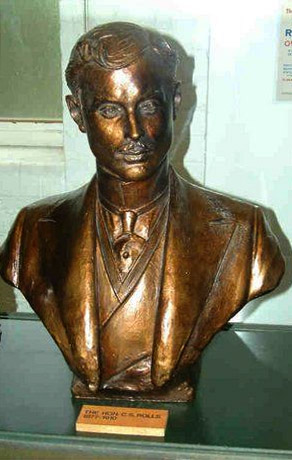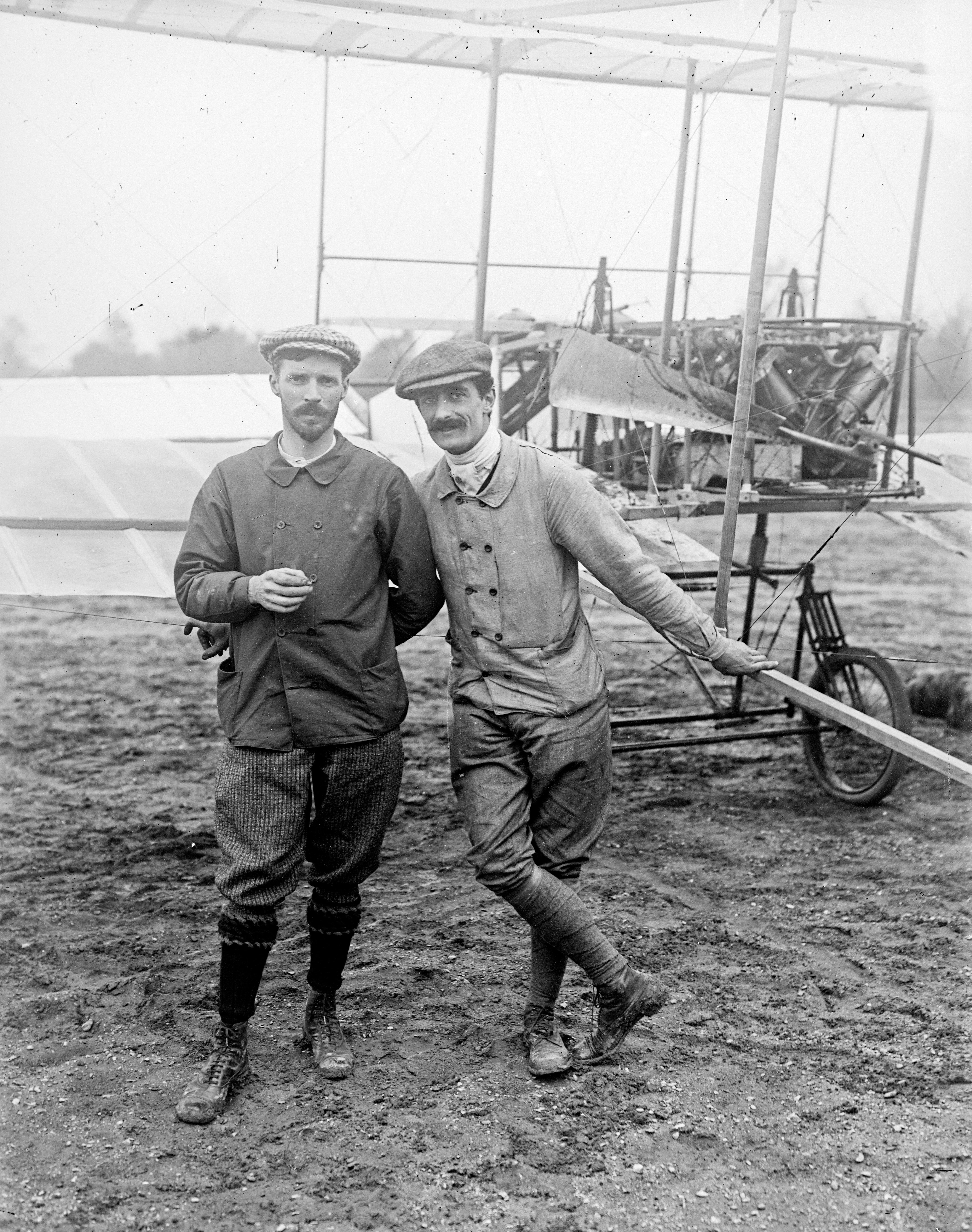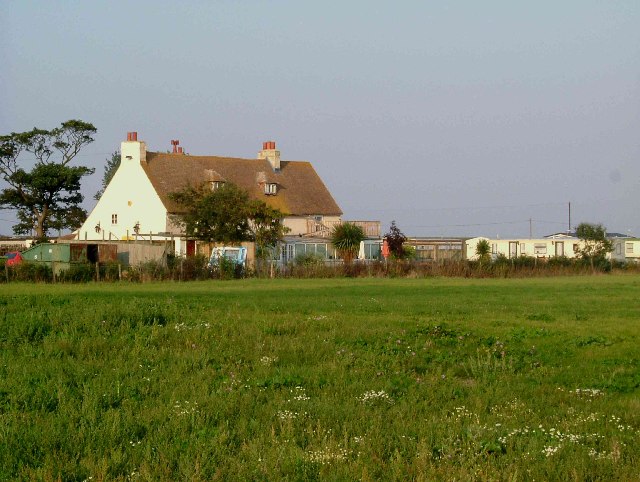|
Royal Naval Flying School
Royal Air Force Eastchurch or more simply RAF Eastchurch (formerly RNAS Eastchurch) is a former Royal Air Force station near Eastchurch village, on the Isle of Sheppey, Kent, England. The history of aviation at Eastchurch stretches back to the first decade of the 20th century when it was used as an airfield by members of the Royal Aero Club. The area saw the first flight by a British pilot in Britain. In 1910 it was operated by the Royal Navy as a training aerodrome and it was known as the Naval Flying School, Eastchurch. In the 1910s the airfield was designated Royal Naval Air Station Eastchurch. With the amalgamation of the Royal Naval Air Service and the Royal Flying Corps on 1 April 1918, the station was transferred to the newly formed Royal Air Force and was re-designated Royal Air Force Eastchurch. Early civilian aviation The members of the Aero Club of Great Britain established their first flying ground near Leysdown on the Isle of Sheppey in 1909. One of the Club's m ... [...More Info...] [...Related Items...] OR: [Wikipedia] [Google] [Baidu] |
Naval Ensign Of The United Kingdom
The White Ensign, at one time called the St George's Ensign because of the simultaneous existence of a crossless version of the flag, is an ensign (flag), ensign worn on British Royal Navy ships and shore establishments. It consists of a red St George's Cross on a white field, identical to the flag of England except with the Union Flag in the upper canton. The White Ensign is also worn by yachts of members of the Royal Yacht Squadron and by ships of Trinity House escorting Monarchy of the United Kingdom, the reigning monarch. In addition to the United Kingdom, several other nations have variants of the White Ensign with their own national flags in the canton, with the St George's Cross sometimes being replaced by a naval badge omitting the cross altogether. Yachts of the Royal Irish Yacht Club wear a white ensign with an Irish tricolour in the first quadrant and defaced by the crowned harp from the Heraldic Badge of Ireland. The Flag of the British Antarctic Territory and the ... [...More Info...] [...Related Items...] OR: [Wikipedia] [Google] [Baidu] |
Royal Flying Corps
The Royal Flying Corps (RFC) was the air arm of the British Army before and during the First World War until it merged with the Royal Naval Air Service on 1 April 1918 to form the Royal Air Force. During the early part of the war, the RFC supported the British Army by artillery co-operation and photographic reconnaissance. This work gradually led RFC pilots into aerial battles with German pilots and later in the war included the strafing of enemy infantry and emplacements, the bombing of German military airfields and later the strategic bombing of German industrial and transport facilities. At the start of World War I the RFC, commanded by Brigadier-General Sir David Henderson, consisted of five squadrons – one observation balloon squadron (RFC No 1 Squadron) and four aeroplane squadrons. These were first used for aerial spotting on 13 September 1914 but only became efficient when they perfected the use of wireless communication at Aubers Ridge on 9 May 1915. Ae ... [...More Info...] [...Related Items...] OR: [Wikipedia] [Google] [Baidu] |
Wright Brothers
The Wright brothers, Orville Wright (August 19, 1871 – January 30, 1948) and Wilbur Wright (April 16, 1867 – May 30, 1912), were American aviation List of aviation pioneers, pioneers generally credited with inventing, building, and flying the world's first successful airplane. They made the first controlled, sustained flight of an engine-powered, Aircraft#Heavier-than-air – aerodynes, heavier-than-air aircraft with the ''Wright Flyer'' on December 17, 1903, four miles (6 km) south of Kitty Hawk, North Carolina, at what is now known as Kill Devil Hills, North Carolina, Kill Devil Hills. In 1904 the Wright brothers developed the ''Wright Flyer II'', which made longer-duration flights including the first circle, followed in 1905 by the first truly practical fixed-wing aircraft, the ''Wright Flyer III''. The brothers' breakthrough invention was their creation of a Flight dynamics (aircraft), three-axis control system, which enabled the pilot to steer the aircraft effec ... [...More Info...] [...Related Items...] OR: [Wikipedia] [Google] [Baidu] |
Cecil Grace
Cecil Stanley Grace (1880 – 22 December 1910) was a pioneer aviator who List of missing aircraft, went missing on a flight across the English Channel in 1910. Family Grace was born in Chile, the son of John William Grace of New York. His uncle was W. R. Grace, a former mayor of New York City and founder of W. R. Grace and Company. Grace was naturalised as a British citizen in October 1910. Eastchurch In 1909 members of the Aero Club of Great Britain established a flying ground at RAF Eastchurch, Eastchurch on the Isle of Sheppey. Grace was one of this early group of pioneering aviators, and in April 1910 he was awarded only the fourth Royal Aero Club List of pilots awarded an Aviator's Certificate by the Royal Aero Club in 1910, Aviator's Certificate. Prior to his death, Grace had arranged to give free flying lessons to prospective pilots nominated by the Royal Navy. The lessons were subsequently given by another aviator, George Cockburn. Final flight In 1910, a numbe ... [...More Info...] [...Related Items...] OR: [Wikipedia] [Google] [Baidu] |
Charles Rolls
Charles Stewart Rolls (27 August 1877 – 12 July 1910) was a British motoring and aviation pioneer. With Henry Royce, he co-founded the Rolls-Royce Limited, Rolls-Royce car manufacturing firm. He was the first Briton to be killed in an aeronautical accident with a powered aircraft, when the tail of his Wright Model A, Wright Flyer broke off during a flying display in Bournemouth. He was aged 32. Early life Rolls was born in Berkeley Square, London, third son of John Rolls, 1st Baron Llangattock, the 1st Baron Llangattock of the Rolls family and Lady Llangattock. Despite his London birth, he retained a strong family connection with his ancestral home, The Hendre, a English country house, country house near Monmouth in Monmouthshire (historic), Monmouthshire in the South East Wales, south-east of Wales. After attending Mortimer Vicarage Preparatory school (UK), Preparatory School in Berkshire, he was educated at Eton College where his developing interest in engines earned him ... [...More Info...] [...Related Items...] OR: [Wikipedia] [Google] [Baidu] |
Voisin 1907 Biplane
The 1907 Voisin biplane (referred to as the Voisin No. I by the 1913 edition of ''Jane's All the World's Aircraft''),The name ''Voisin I'' was later used by the French military as the designation for the Rhône powered versions of the Voisin L was Europe's first successful powered aircraft, designed by aeronautical engineer and manufacturer Gabriel Voisin. It was used by the French aviator Henri FarmanBorn in France to British father, Henri (or Henry) Farman took French nationality in 1937 to make the first heavier-than-air flight lasting more than a minute in Europe, and also to make the first full circle. The first examples of the aircraft were known by the name of their owners, for instance the Delagrange I, or the Henri Farman n°1. Farman made many modifications to his aircraft, and these were incorporated into later production aircraft built by Voisin. The type enjoyed widespread success, and around sixty were built. Background Between 1904 and 1908, there was fierc ... [...More Info...] [...Related Items...] OR: [Wikipedia] [Google] [Baidu] |
John Moore-Brabazon
Lieutenant Colonel John Theodore Cuthbert Moore-Brabazon, 1st Baron Brabazon of Tara, , HonFRPS (8 February 1884 – 17 May 1964) was an English aviation pioneer and Conservative politician. He was the first Englishman to pilot a heavier-than-air machine under power in England, and he served as Minister of Transport and Minister of Aircraft Production during the Second World War. Early life Moore-Brabazon was born in London to Lieutenant Colonel John Arthur Henry Moore-Brabazon (1828–1908) and his wife, Emma Sophia née Richards (died 1937). He was educated at Harrow School before studying engineering at Trinity College, Cambridge, but did not graduate. He spent university holidays working for Charles Rolls as an unpaid mechanic, and became an apprentice at Darracq in Paris after leaving Cambridge. In 1907 he won the Circuit des Ardennes in a Minerva. Pioneer aviator Moore-Brabazon first flew solo in November 1908 in France in a Voisin biplane. He became the first resid ... [...More Info...] [...Related Items...] OR: [Wikipedia] [Google] [Baidu] |
Wright A
The Wright Model A is an early aircraft produced by the Wright Brothers in the United States beginning in 1906. It was a development of their Wright Flyer III, Flyer III airplane of 1905. The Wrights built about seven Model A's in their bicycle shop during the period 1906–1907, in which they did no flying. One of these was shipped to Le Havre in 1907 in order to demonstrate it to the French. The Model A had a engine and seating for two with a new control arrangement. Otherwise, it was identical to the 1905 airplane. The Model A was the first aircraft that they offered for sale, and the first aircraft design to enter serial production anywhere in the world. Apart from the seven machines the Wrights built themselves in 1906–1907, they sold licences for production in Europe with the largest number of Model A's actually being produced in Germany by Flugmaschine Wright GmbH, which built about 60 examples. The 1909 Military Flyer was a one-of-a-kind Model A built by the Wright Br ... [...More Info...] [...Related Items...] OR: [Wikipedia] [Google] [Baidu] |
Short Brothers
Short Brothers plc, usually referred to as Shorts or Short, is an aerospace company based in Belfast, Northern Ireland. Shorts was founded in 1908 in London, and was the first company in the world to make production aeroplanes. It was particularly notable for its flying boat designs manufactured into the 1950s. In 1943, Shorts was Nationalization, nationalised and later denationalised, and in 1948 moved from its main base at Rochester, Kent to Belfast. In the 1960s, Shorts mainly produced turboprop airliners, major components for aerospace primary manufacturers, and missiles for the British Armed Forces. Shorts was primarily HM Government, government-owned until being bought by Bombardier Inc., Bombardier in 1989 and, in 2007, was the largest manufacturing concern in Northern Ireland. In November 2020, Bombardier sold its Belfast operations to Spirit AeroSystems. The company's products include aircraft components, engine nacelles and aircraft flight control systems for Bomba ... [...More Info...] [...Related Items...] OR: [Wikipedia] [Google] [Baidu] |






